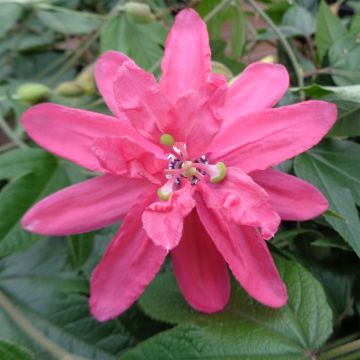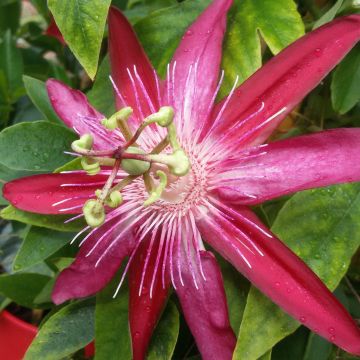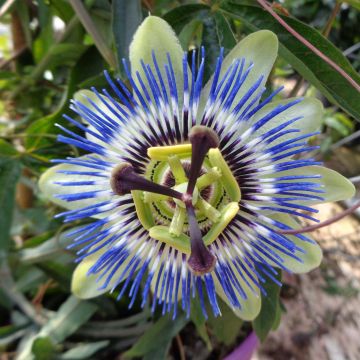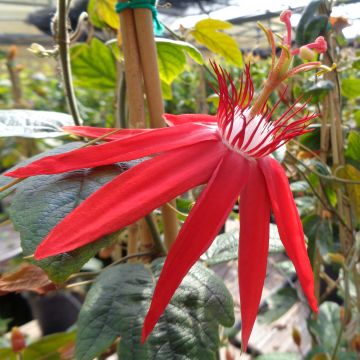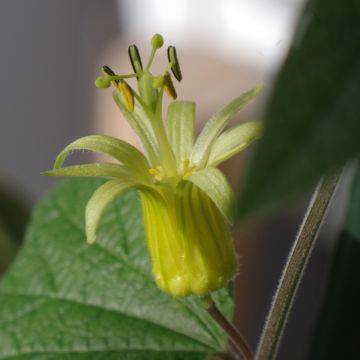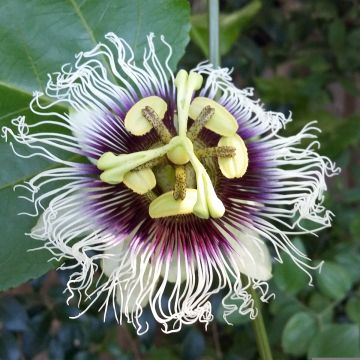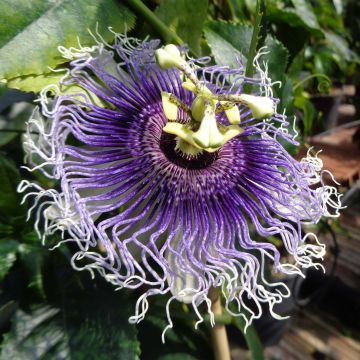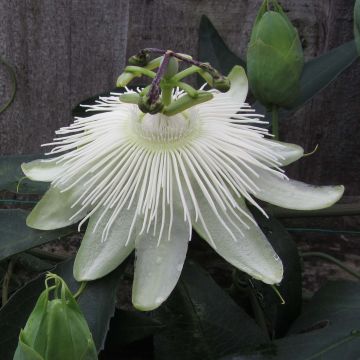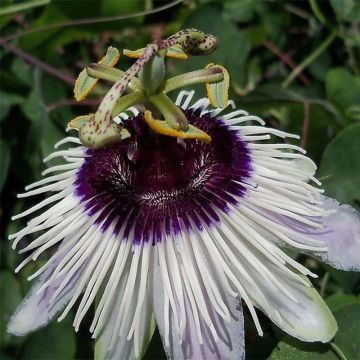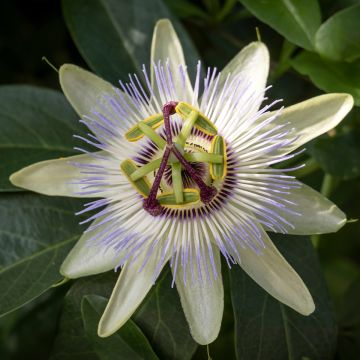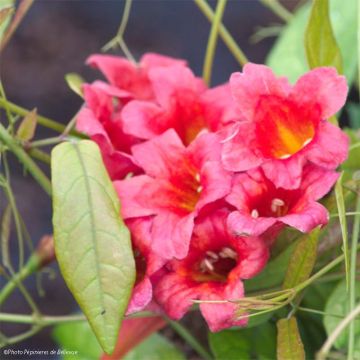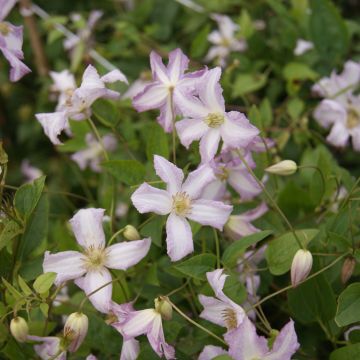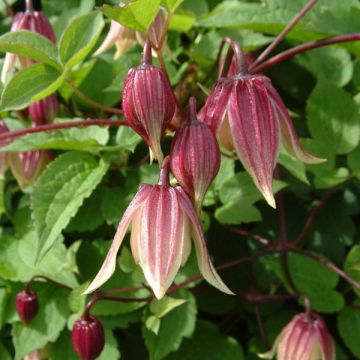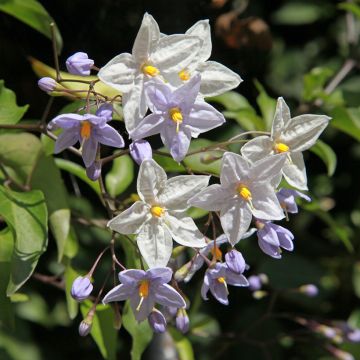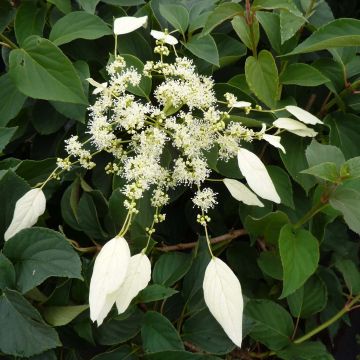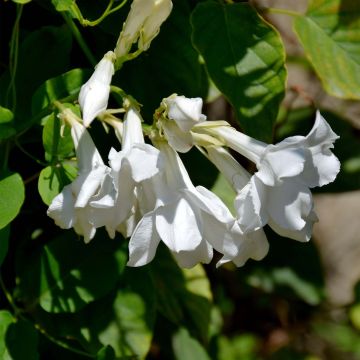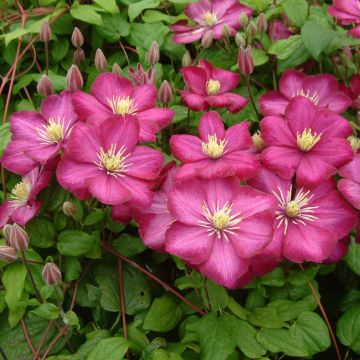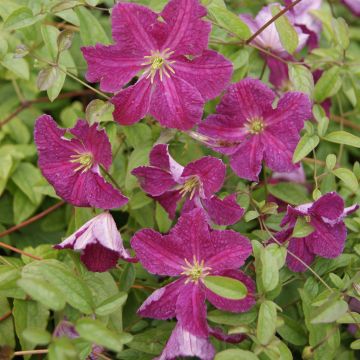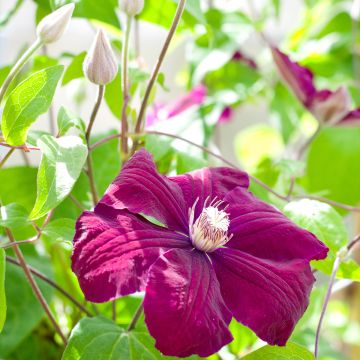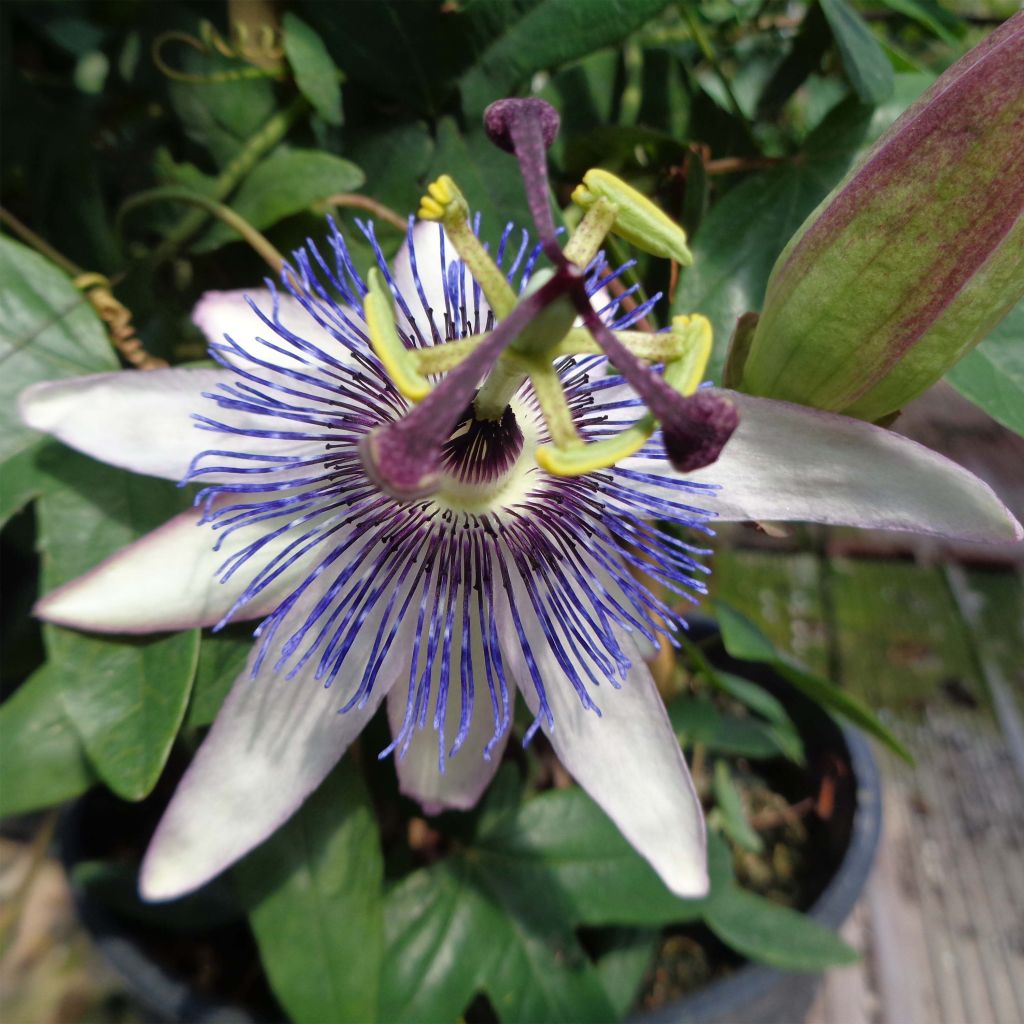

Passiflore Amethyst Blanche - Fleur de la Passion
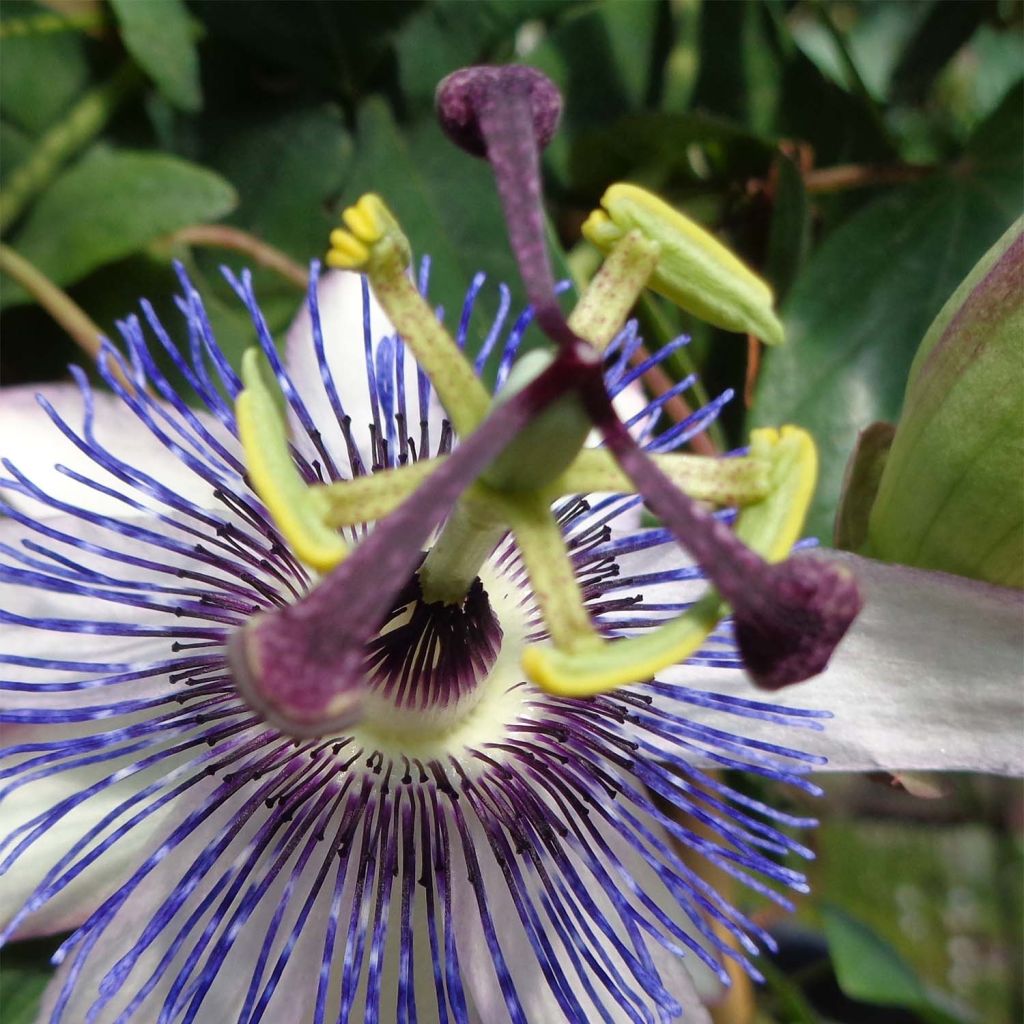

Passiflore Amethyst Blanche - Fleur de la Passion
Passiflora Amethyst White- Passion Flower
Passiflora Amethyst Blanche
Passion Flower, Passion Vine
Plant underdeveloped or even stunted after transplantation
Francois, 14/05/2020
This item cannot be shipped to the selected country
Delivery charge from €5.90
More information
Schedule delivery date,
and select date in basket
This plant carries a 6 months recovery warranty
More information
We guarantee the quality of our plants for a full growing cycle, and will replace at our expense any plant that fails to recover under normal climatic and planting conditions.
From €5.90 for pickup delivery and €6.90 for home delivery
Express home delivery from €8.90.

Does this plant fit my garden?
Set up your Plantfit profile →
Description
The Passiflora 'Amethyst Blanche' is a white variant of the timeless 'Amethyst Violacea' (possibly the oldest known horticultural hybrid among passionflowers!). Like its cousin with purple tones, it will thrive in mild climate gardens, where it will be universally appreciated for its robustness and good cold resistance. This pretty vine is not lacking in vigor or brilliance when its medium-sized flowers appear, with white petals tinged with violet that contrast deliciously with its lime green stamens. Slightly or not fragrant, occasionally producing hollow fruits, they bloom from June to October on a foliage cut into dark green lobes, more or less evergreen. Plant it in a sunny, sheltered position with loose and deep soil. Guaranteed success, in the garden as well as on the terrace!
Mostly native to tropical areas of South America, passionflowers belong to the large family of Passifloraceae, which includes 400 species and numerous spontaneous or horticultural hybrids.
The Passiflora (x) Violacea is an old horticultural hybrid obtained in 1824 by Loiseleur-Deslongchamps, a French botanist and nurseryman. This variety originated from the cross-breeding of P. caerulea, native to South America and naturalized in the South of France, and P. racemosa, Brazilian, with purple flowers in racemes. This excellent variety has received an Award of Garden Merit, a distinction awarded in England by the RHS for its ornamental qualities and ease of cultivation.
'Amethyst Blanche' is a voluble plant with evergreen stems that clings to its support using tendrils, reaching a height of 4m (13ft) and spreading over 3m (10ft). It is characterized by its quadrangular stems covered with leaves cut into 3 to 5 thick, ovate lobes, of a shiny dark green color, sometimes washed with coppery reflections, more or less evergreen. Its flowering extends from summer to early autumn, in the form of 5-6cm (2in) diameter flowers that constantly renew themselves on the plant, more abundantly in full sun. Its flowers, slightly fragrant, are formed by white petals. The heart of stamens is lime green and its filaments are of a beautiful intense dark violet. The unusual shape of the flower, quite ephemeral, evolves: petals and sepals curl, while the crown of filaments folds and then straightens up, in order to avoid self-pollination. Once pollinated, the flowers give way to rare oval and orange fruits, measuring from 5 to 6cm (2in) long. These fruits are often hollow.
This Passion Flower is not a capricious and difficult plant to cultivate like some orchids. It grows easily in any well-drained, light, fairly deep and not too dry soil in summer, and blooms generously in sunny and sheltered locations. Pruning, at the end of flowering, consists of reducing the branches to maintain a beautiful habit. It thrives in all southern and Atlantic regions. With its height of 4 to 5m (13 to 16ft) and its generous exotic flowering, the Passiflora Violacea is a wonderful plant to dress up walls, fences, trellises, porches, or to weave into a hedge. It is also highly appreciated in verandas where it will survive cold winters without damage. Enthusiasts of exotic vines will also cultivate alongside it the Podranea ricasoliana (pink trumpet vine) and the Mandevilla laxa, with large white and fragrant flowers. All three can withstand short freezes of around -8°C (17.6°F) without weakening.
Report an error about the product description
Passiflora Amethyst White- Passion Flower in pictures
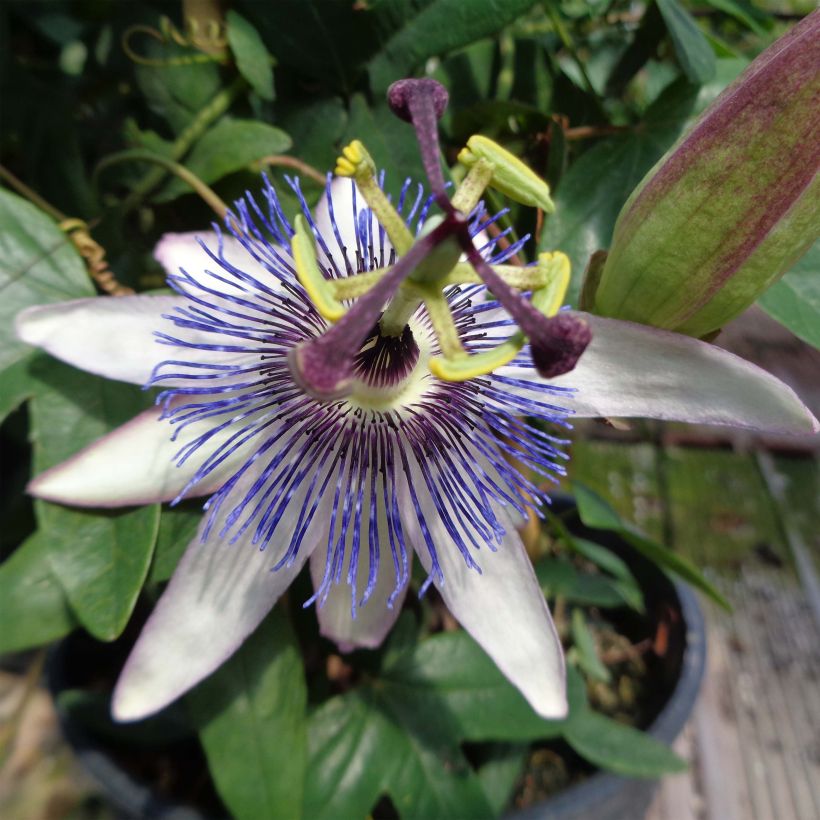

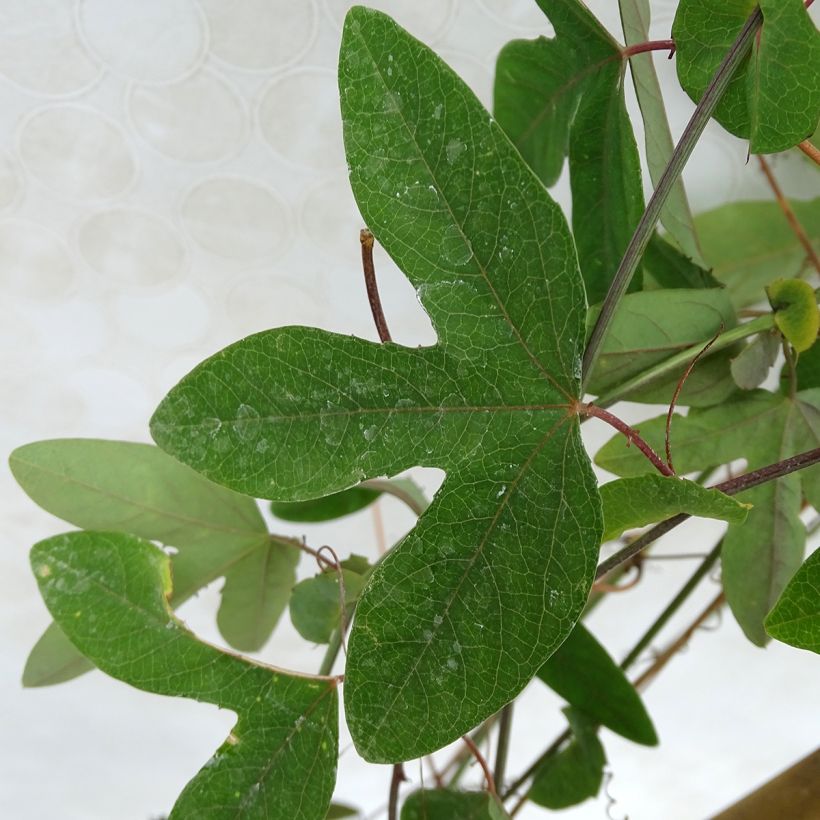

Plant habit
Flowering
Foliage
Botanical data
Passiflora
Amethyst Blanche
Passifloraceae
Passion Flower, Passion Vine
Cultivar or hybrid
Other Passionflowers
Planting and care
The 'Amethyst Blanche' passionflower is a sun-loving and heat-loving plant that should be sheltered from cold and drying winds. Plant it in ordinary but deep, well-worked, well-amended, and well-drained soil. Under these conditions, it grows without difficulty and with specific soil requirements if it is balanced and healthy. Hardy down to -8°C (17.6°F), it should only be planted in a protected location, with good winter mulching. Place it on a support to support the weight of vegetation. Direct its branches well on the support as the growth is exuberant. Pruning before winter is recommended to maintain a reasonable size. Do not hesitate to cut back the main branches to facilitate growth. Remove dead or misplaced branches and prune excess branches to aerate the plant. Beware of scale insects, whiteflies, and the cucumber mosaic virus. Treat preventively.
Planting period
Intended location
Care
-
, onOrder confirmed
Reply from on Promesse de fleurs
Summer flowering climbers
Haven't found what you were looking for?
Hardiness is the lowest winter temperature a plant can endure without suffering serious damage or even dying. However, hardiness is affected by location (a sheltered area, such as a patio), protection (winter cover) and soil type (hardiness is improved by well-drained soil).

Photo Sharing Terms & Conditions
In order to encourage gardeners to interact and share their experiences, Promesse de fleurs offers various media enabling content to be uploaded onto its Site - in particular via the ‘Photo sharing’ module.
The User agrees to refrain from:
- Posting any content that is illegal, prejudicial, insulting, racist, inciteful to hatred, revisionist, contrary to public decency, that infringes on privacy or on the privacy rights of third parties, in particular the publicity rights of persons and goods, intellectual property rights, or the right to privacy.
- Submitting content on behalf of a third party;
- Impersonate the identity of a third party and/or publish any personal information about a third party;
In general, the User undertakes to refrain from any unethical behaviour.
All Content (in particular text, comments, files, images, photos, videos, creative works, etc.), which may be subject to property or intellectual property rights, image or other private rights, shall remain the property of the User, subject to the limited rights granted by the terms of the licence granted by Promesse de fleurs as stated below. Users are at liberty to publish or not to publish such Content on the Site, notably via the ‘Photo Sharing’ facility, and accept that this Content shall be made public and freely accessible, notably on the Internet.
Users further acknowledge, undertake to have ,and guarantee that they hold all necessary rights and permissions to publish such material on the Site, in particular with regard to the legislation in force pertaining to any privacy, property, intellectual property, image, or contractual rights, or rights of any other nature. By publishing such Content on the Site, Users acknowledge accepting full liability as publishers of the Content within the meaning of the law, and grant Promesse de fleurs, free of charge, an inclusive, worldwide licence for the said Content for the entire duration of its publication, including all reproduction, representation, up/downloading, displaying, performing, transmission, and storage rights.
Users also grant permission for their name to be linked to the Content and accept that this link may not always be made available.
By engaging in posting material, Users consent to their Content becoming automatically accessible on the Internet, in particular on other sites and/or blogs and/or web pages of the Promesse de fleurs site, including in particular social pages and the Promesse de fleurs catalogue.
Users may secure the removal of entrusted content free of charge by issuing a simple request via our contact form.
The flowering period indicated on our website applies to countries and regions located in USDA zone 8 (France, the United Kingdom, Ireland, the Netherlands, etc.)
It will vary according to where you live:
- In zones 9 to 10 (Italy, Spain, Greece, etc.), flowering will occur about 2 to 4 weeks earlier.
- In zones 6 to 7 (Germany, Poland, Slovenia, and lower mountainous regions), flowering will be delayed by 2 to 3 weeks.
- In zone 5 (Central Europe, Scandinavia), blooming will be delayed by 3 to 5 weeks.
In temperate climates, pruning of spring-flowering shrubs (forsythia, spireas, etc.) should be done just after flowering.
Pruning of summer-flowering shrubs (Indian Lilac, Perovskia, etc.) can be done in winter or spring.
In cold regions as well as with frost-sensitive plants, avoid pruning too early when severe frosts may still occur.
The planting period indicated on our website applies to countries and regions located in USDA zone 8 (France, United Kingdom, Ireland, Netherlands).
It will vary according to where you live:
- In Mediterranean zones (Marseille, Madrid, Milan, etc.), autumn and winter are the best planting periods.
- In continental zones (Strasbourg, Munich, Vienna, etc.), delay planting by 2 to 3 weeks in spring and bring it forward by 2 to 4 weeks in autumn.
- In mountainous regions (the Alps, Pyrenees, Carpathians, etc.), it is best to plant in late spring (May-June) or late summer (August-September).
The harvesting period indicated on our website applies to countries and regions in USDA zone 8 (France, England, Ireland, the Netherlands).
In colder areas (Scandinavia, Poland, Austria...) fruit and vegetable harvests are likely to be delayed by 3-4 weeks.
In warmer areas (Italy, Spain, Greece, etc.), harvesting will probably take place earlier, depending on weather conditions.
The sowing periods indicated on our website apply to countries and regions within USDA Zone 8 (France, UK, Ireland, Netherlands).
In colder areas (Scandinavia, Poland, Austria...), delay any outdoor sowing by 3-4 weeks, or sow under glass.
In warmer climes (Italy, Spain, Greece, etc.), bring outdoor sowing forward by a few weeks.

































